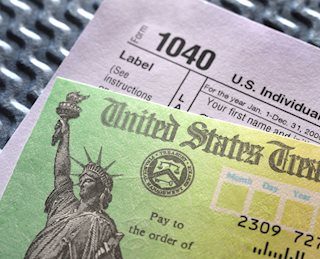NFP Quick Analysis: Three reasons why necessary dollar correction may be followed by fresh rises
|
- US Non-Farm Payrolls came out at 225,000 jobs gained in January.
- The dollar's retreat is justified and much needed after the rally.
- The greenback remains the cleanest shirt in a dirty pile,
The writing was on the wall – markets' frontrunning of the Non-Farm Payrolls were bound to end and trigger a "buy the rumor, sell the fact" America gained 225,000 positions in the first month of 2020 – better than 160,000 expected but below real expectations. Upbeat data, especially from ADP's blockbuster figure of 291,000 private-sector jobs gained last month.
That led to significant frontrunning, and now the pendulum swings to the other direction. Moreover, some dollar bulls are taking profits ahead of the weekend.
The dollar began correcting the gains in the hour, leading to the release and is unable to recover.
Nevertheless, once the dust settles, the dollar has three reasons to rise:
1) The data is still upbeat
An increase of 225,000 is nothing to frown upon – it beats the average in 2019 and is above the magic 200K level that Federal Reserve officials are eyeing. Moreover, annual wage growth topped 3% and also expectations with 3.1%.
And while the Unemployment Rate edged up to 3.6%, it is around historic lows – and comes on top of an encouraging increase in the participation rate. More Americans have joined the workforce.
Overall, the US labor market is alive and kicking, contrary to a conclusion that may be reached from the dollar reaction.
2) Coronavirus fears
The headlines of record highs in US markets and hopes for vaccine to the virus may be deceiving – the outbreak is far from over. The economic damage continues spreading around the world, and investors may keep flocking to the safety of the US dollar.
While the greenback may bow to the yen – the ultimate safe-haven – it has room to rise against other currencies such as the euro, pound, and Aussie.
3) Cleanest shirt in the dirty pile
Even if the jobs report were genuinely terrible – the world's largest economy continues outperforming its peers in the developed world. Weak German and French data dampens hopes for a recovery in the eurozone. The UK faces tough negotiations on post-Brexit trade relations. Australia and New Zealand are suffering from collateral damage from China, while the Canadian dollar is falling alongside oil prices.
While the Federal Reserve is frustrated with low inflation, it is still higher than in its peers – and this is reflected by higher interest rates. The gap in borrowing costs continues keeping the dollar bid,
Conclusion
Strong data, coronavirus virus, and an interest rate advantage will likely keep the dollar bid.
Information on these pages contains forward-looking statements that involve risks and uncertainties. Markets and instruments profiled on this page are for informational purposes only and should not in any way come across as a recommendation to buy or sell in these assets. You should do your own thorough research before making any investment decisions. FXStreet does not in any way guarantee that this information is free from mistakes, errors, or material misstatements. It also does not guarantee that this information is of a timely nature. Investing in Open Markets involves a great deal of risk, including the loss of all or a portion of your investment, as well as emotional distress. All risks, losses and costs associated with investing, including total loss of principal, are your responsibility. The views and opinions expressed in this article are those of the authors and do not necessarily reflect the official policy or position of FXStreet nor its advertisers.